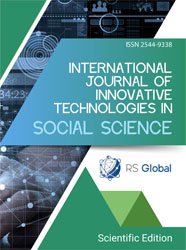AN ARTICLE ON DATAMINING IN GAMES AND THE SCHEMA SYSTEM
Abstract
Data mining, the process of discovering patterns and knowledge from large amounts of data, has become an indispensable discipline in the 21st century. While its conceptual roots and the term itself emerged in the late 1980s and 1990s, the exponential growth in data generation and computational power has propelled it to the forefront of technology. Data mining is not a single method but a collection of techniques and algorithms used to transform raw data into valuable information and actionable insights. This practice has found a critical application in the video game industry, giving rise to the field of "game analytics." The ability to collect data on player behavior on a massive scale, especially with the rise of online and multiplayer games, allows developers to understand their audience, balance gameplay, and improve the user experience iteratively. This article provides an overview of data mining, traces its historical progression, and discusses its importance in modern game development. It concludes with a concrete example: an analysis of the schema system in Valve's Source 2 engine, which exemplifies how a modern game engine is architecturally designed to facilitate data-driven development and analysis.
References
https://www.games.cg.jku.at/wp-content/uploads/2022/10/chapter1_GDABook.pdf, A Brief Overview of Data Mining and Analytics in Games
https://ioaglobal.org/blog/role-of-data-science-in-gaming-industry/, The Role of Data Science in the Gaming Industry
Game Data Mining: Clustering and Visualization of Online Game Data in Cyber-Physical Worlds, sciencedirect.com
https://www.irma-international.org/viewtitle/77753/?isxn=9781466643017 Modular Game Engine Design
https://praydog.com/reverse-engineering/2015/06/24/source2.html An Analysis of the Source 2 Engine: The Schema System
Views:
53
Downloads:
44
Copyright (c) 2025 Duger Gantuya, Tsyrenzhapov Pavel Sergeevich

This work is licensed under a Creative Commons Attribution 4.0 International License.
All articles are published in open-access and licensed under a Creative Commons Attribution 4.0 International License (CC BY 4.0). Hence, authors retain copyright to the content of the articles.
CC BY 4.0 License allows content to be copied, adapted, displayed, distributed, re-published or otherwise re-used for any purpose including for adaptation and commercial use provided the content is attributed.











